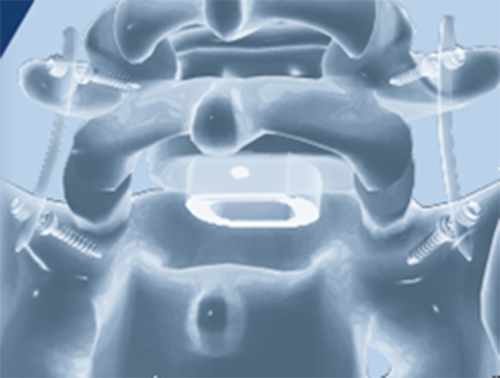
PEEK-OPTIMA Spinal Rod Components providing semi-rigid fixation to bridge the gap between rigid and dynamic spinal constructs. (Credit: Invibio)
The U.S. Food and Drug Administration (FDA) has recently reclassified semi-rigid spinal stabilization systems from Class III to Class II offering a regulatory pathway to 510(k) clearance in the United States for innovative devices using PEEK-OPTIMA polymer based rods from Invibio Biomaterial Solutions (“Invibio”).
Invibio collaborated closely with medical device manufacturers and the FDA to provide clinical and biomechanical data in support of the use of semi-rigid PEEK-OPTIMA rods for spinal stabilization. The pioneering development and reclassification is expected to assist the medical profession in achieving progress in enhanced spinal fusion systems and procedures.
Clinical evidence: Invibio to support OEMs further with their submissions to the FDA
“The down classification of PEEK-OPTIMA rods as a Class II technology for spinal fusion is a welcome and progressive development for the medical device market. Substantial evidence was presented in reaching this conclusion, including data from over 51,000 PEEK rod implantations. We now have a growing body of clinical evidence that systems based on Invibio´s PEEK-OPTIMA rods have clearly defined advantages over all-metal constructs and have the potential to drive the future of posterior spine stabilization,” comments John Devine, Invibio medical business director.
“Healthcare globally is under pressure to control costs which is why Invibio offers PEEK-OPTIMA spinal rod components to the manufacturer. Compiling evidence that supports the safety and clinical benefits of our materials enables us to also provide an efficient route to market for our customers in terms of manufacturing and regulatory clearance. We look forward to working with our customers to achieve clearance for semi-rigid systems in order to offer improved options for surgeons and ultimately patients,” concludes Devine.
Metal alternative offers distinct advantages
For some time, the medical profession has been aware that spinal-rod components made from PEEK-OPTIMA polymers may be used as an alternative to metal to achieve semi-rigid fixation with posterior pedicle screw systems as an adjunct to fusion. And in fact, they offer distinct advantages over stabilization systems constructed from a metal such as titanium.
“PEEK-polymer solutions are widely recognized for spinal interbody fusion and are frequently used. The versatile PEEK-OPTIMA has a modulus close to that of human bone, and this allows it to be a natural bridge between very rigid metal implants, such as the titanium constructs, and more dynamic approaches. In fact, PEEK-polymer implants offer numerous benefits, including radiolucency, which of course metals don’t allow, while retaining the stability of titanium,” comments Dr. Thierry Desjardins, Neurosurgeon (Cagnes-sur-Mer, France), who has been using PEEK-OPTIMA spinal rods since June 2011 and has always been reluctant to use too rigid a system as this could accelerate degeneration at adjacent spinal segments.
Semi-rigid rods to bridge treatment gap: improved load sharing can encourage fusion
Spinal rods composed of metal are not without challenges, including, but not limited to, rod breakage, the loosening of screws, and accelerated degeneration at adjacent spinal segments. The high stiffness inherent in all-metal constructs is believed to contribute to these clinical challenges and negatively impact patient outcomes.1,2 In addition, a metal such as titanium lacks artifact-free imaging, and inevitably this impacts the ability of surgeons to position stabilization systems accurately.
PEEK-OPTIMA polymer based stabilization, on the other hand, effectively functions as a “bridge” approach. Rods made from the material have sufficient strength to reduce the range of motion2,3 in order to stabilize the treated segment4, but possessing a modulus similar to that of cortical bone, they still allow physiological movement on adjacent upper and lower segments.3 As a result, clinical results increasingly suggest that PEEK-OPTIMA spinal rod components preserve or slow down the degeneration of adjacent discs.5 As a consequence, patients may benefit from improved load sharing to encourage fusion,2,6,7 and more physiologic loading at adjacent levels, which may decelerate degeneration.8,9




